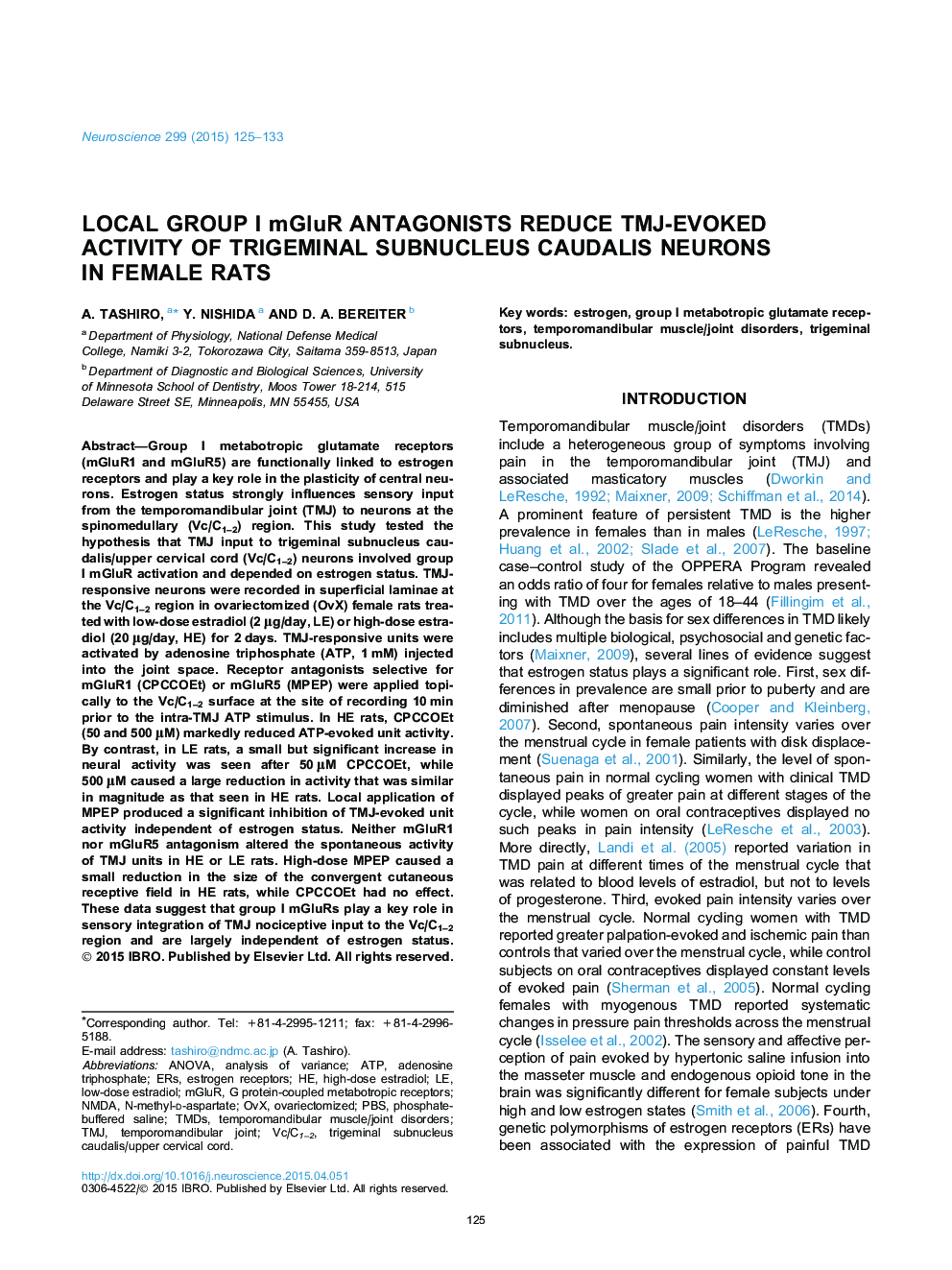| کد مقاله | کد نشریه | سال انتشار | مقاله انگلیسی | نسخه تمام متن |
|---|---|---|---|---|
| 4337473 | 1614777 | 2015 | 9 صفحه PDF | دانلود رایگان |

• High E2 enhances TMJ-evoked activity of superficial laminae neurons at Vc/C1–2.
• Group I mGluRs play a key role in sensory integration of TMJ nociceptive input to the Vc/C1–2.
• Group I mGluR modulation of TMJ unit activity is independent of E2 status.
Group I metabotropic glutamate receptors (mGluR1 and mGluR5) are functionally linked to estrogen receptors and play a key role in the plasticity of central neurons. Estrogen status strongly influences sensory input from the temporomandibular joint (TMJ) to neurons at the spinomedullary (Vc/C1–2) region. This study tested the hypothesis that TMJ input to trigeminal subnucleus caudalis/upper cervical cord (Vc/C1–2) neurons involved group I mGluR activation and depended on estrogen status. TMJ-responsive neurons were recorded in superficial laminae at the Vc/C1–2 region in ovariectomized (OvX) female rats treated with low-dose estradiol (2 μg/day, LE) or high-dose estradiol (20 μg/day, HE) for 2 days. TMJ-responsive units were activated by adenosine triphosphate (ATP, 1 mM) injected into the joint space. Receptor antagonists selective for mGluR1 (CPCCOEt) or mGluR5 (MPEP) were applied topically to the Vc/C1–2 surface at the site of recording 10 min prior to the intra-TMJ ATP stimulus. In HE rats, CPCCOEt (50 and 500 μM) markedly reduced ATP-evoked unit activity. By contrast, in LE rats, a small but significant increase in neural activity was seen after 50 μM CPCCOEt, while 500 μM caused a large reduction in activity that was similar in magnitude as that seen in HE rats. Local application of MPEP produced a significant inhibition of TMJ-evoked unit activity independent of estrogen status. Neither mGluR1 nor mGluR5 antagonism altered the spontaneous activity of TMJ units in HE or LE rats. High-dose MPEP caused a small reduction in the size of the convergent cutaneous receptive field in HE rats, while CPCCOEt had no effect. These data suggest that group I mGluRs play a key role in sensory integration of TMJ nociceptive input to the Vc/C1–2 region and are largely independent of estrogen status.
Journal: Neuroscience - Volume 299, 23 July 2015, Pages 125–133